Church History/Christian History
Book Review - Christian Apologetics Past and Present: A Primary Source Reader
[amazon 1581349068 thumbnail] First Peter 3:15 states, “But sanctify the Lord God in your hearts: and be ready always to give an answer to every man that asketh you a reason of the hope that is in you with meekness and fear.” Apologetics is the formal study of how we are to “give an answer.”
William Edgar and K. Scott Oliphint, professors of apologetics at Westminster Theological Seminary, have done a great service to the Church in compiling a collection of writings from the New Testament era to AD 1500. This collection shows how writers from different eras, facing different challenges, have sought to defend the faith.
The volume here reviewed is the first of what originally was to be a two-volume set, and has 486 pages plus an 11-page index. In communications with someone working on volume two, I learned that the volume had grown to over 1,000 pages, and there is a possibility they will split the material from AD 1500 to the present into two volumes. If the second volume is of the same quality as the first, I hope that no material will be deleted in an attempt to limit the series to two volumes.
Making an anthology is like carving a statue. The editors, like the sculptor, must make many decisions regarding what to include and what to chisel away. In my judgment, Edgar and Oliphint have made very good—and in one case surprisingly good—selections from the material available. This book provides an excellent introduction to how believers have fought for the faith against pagans and atheists as well as against heretics and false religions.
The book begins with an excellent introduction to the overall project, providing both a short review of the state of apologetics today and the criteria for making the selections included. The editors state, “The twentieth century saw both significant development in apologetics and a measure of decline.” (p. 1) They cite the “onslaught of the Enlightenment, followed by Romanticism” (p. 2) as making both reason and faith independent of Scripture, calling for a need to develop new ways to explain our hope to the world around us. In our day, when many now associate taking religion seriously with violence, there are new challenges as well.
Discussion
BCM Hosting Fundamental Heritage Conference
Body
Discussion
Keswick sanctification theology profoundly influenced early fundamentalism and has continued to impact the movement up to the present time.
Body
The Impact of Keswick Theology on Fundamentalism Comment: The beginning of a series on the positive impact of Keswick theology on Fundamentalism.
Discussion
Book Review - Ancient Christian Doctrine 1: We Believe in One God
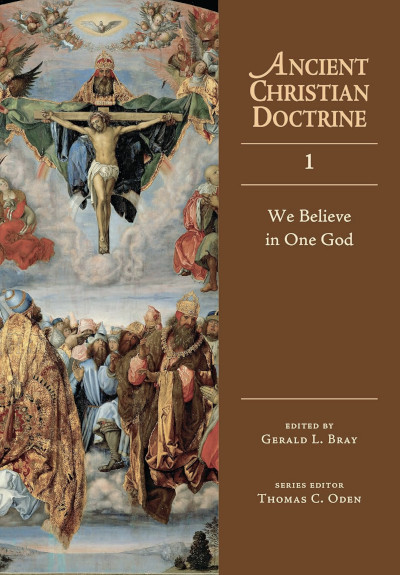
Mention the “Church Fathers” and “Roman Catholicism” will likely spring to the minds of many pew-warming (and some pulpit-filling) evangelicals and fundamentalists. Let’s face it, for many Protestants, Christian history begins in 1517 with Martin Luther’s nailing his 95 theses to the door of the Wittenberg Church. The fourteen hundred years of Christian history spanning Revelation to the Reformation is often foggy and remote. So large a lacuna in Christians’ understanding of the development of foundational doctrines makes them easy prey for Dan Brown, Bart Ehrman and their insidious ilk, who are eager to fill the vacuum with lies and innuendo about suppressed gospels and altered manuscripts. Series editor Thomas Oden notes, “To the extent Christians today ignore the ancient rule of faith, they remain all the more vulnerable to these distortions” (p. xiv). Diagnosing the problem is half the battle: what can be done to remedy it?
A helpful corrective (even if not a silver bullet) has come in the five-volume Ancient Christian Doctrine series published by IVP Academic in 2009. The series is self-described as “a collection of doctrinal definitions organized around the key phrases of the Nicene-Constantinopolitan Creed (commonly called simply The Nicene Creed) as viewed by the foremost ancient Christian writers” (p. vii). Those ancient Christian writers include the disciples of the original disciples and those disciples who pressed on the work in the years spanning AD 95 through 750.
Despite the fact that eminent Reformers Martin Luther and John Calvin were steeped in the Church Fathers, that fertile ground was, over the intervening centuries, ceded to Catholicism (at least by the rank and file churchgoers outside the academy). Catholic writers, most notably Mike Aquilina, have in recent years produced dozens of accessible works that have successfully popularized patristics for a predominantly Catholic audience. These treasured writings predating the Schism and the Reformation nonetheless remain a blind spot for many non-Catholics. Oden acknowledges this unfortunate fact when noting “the evangelical tradition is far more famished for their sources, having been longer denied sustenance from them” (p. xvi).
Discussion
Baptism in History, Part 2
 Read Part 1.
Read Part 1.
Discussion
Baptism in History, Part 1
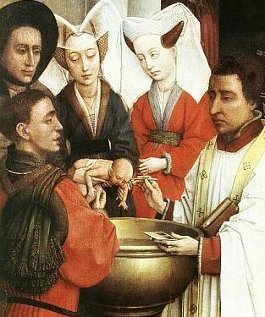
Discussion
Book Review - Worshiping with the Church Fathers
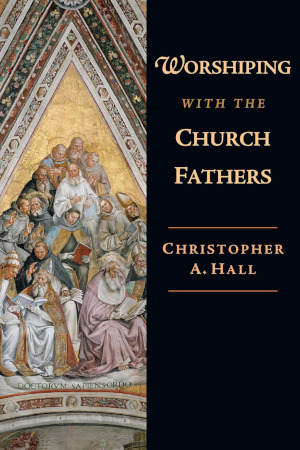
Worshiping with the Church Fathers seems to reflect a growing interest among Protestants—especially Evangelicals—in early Christianity. Hall is an associate editor for IVP’s Ancient Christian Commentary on Scripture, as well as the author of the series of which this book is the third installment. The other titles are Reading Scripture with the Church Fathers, Learning Theology with the Church Fathers and Living Ethnically with the Church Fathers.
The present volume focuses on “baptism, the Eucharist, prayer and the spirituality of the desert fathers” (p. 13). Throughout the book, Hall inserts personal experiences that help keep the book from being a boring string of facts. To help prepare readers for the strangeness they will encounter, he concedes that our world is different, that we are personally resistant to many of the themes here,that we offer “aesthetic resistance,” and we listen to the fathers in a negative fashion (pp. 14-15).
By “aesthetic resistance,” Hall is referring to the fathers’ use of allegory and the dislike of many for that practice—including, he expects, some of his readers (p. 15). He does offer sound advice regarding “negative listening.” We often “ignore all that is positively said in a text and [draw] our attention to what is not said and what we think should be said” (p. 16). I decided to listen before I drew any conclusions.
Discussion
Tertullian Misses the Gospel
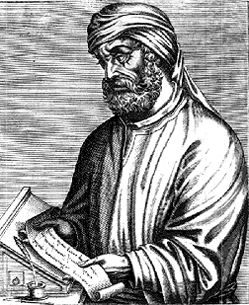
Tertullian was the first Latin theologian and one of the most creative minds of the second and early third centuries. In particular, his writings contributed greatly to later articulations of the Trinity. This essay focuses on the negative, but not because I think Tertullian was worthless or because I think all good Protestants should bash the Fathers to prove their orthodoxy. On the contrary, we Protestants could probably use quite a bit more familiarity with, and appreciation for, the first five centuries of Christianity. It is precisely because of how much I enjoy Tertullian that his sub-biblical gospel stings me so sharply. I’m writing this because I think we Christians could benefit from understanding how this powerful theologian and apologist came to his misunderstanding of the gospel.
Tertullian believes that there are several unforgivable sins—“murder, idolatry, fraud, apostasy, blasphemy; (and), of course, too, adultery and fornication; and if there be any other ‘violation of the temple of God’ ” (On Modesty, 19). To Protestants, this alone appears unnecessarily harsh, but Tertullian goes farther still. It is not that the Church (or at least the New Prophets, i.e., Montanists) lacks the power to forgive these sins, in Tertullian’s view; it does have the power, but it ought not forgive such sins (On Modesty, 21). Disregarding Tertullian’s scriptural arguments, which are intriguing, his practical argument is that such leniency will simply encourage more sin in the Church, which is clearly unacceptable. There are a few hints that perhaps God in His mercy will forgive the repentant, but in any case, they cannot be returned to the fellowship of the Church.
What a twisted view of the gospel! Yet, it is more profitable to explain the context of this error than simply to decry it. We must start with Tertullian’s view of the Church. He is a perfectionist, or very nearly so. The Church is the bride of Christ, so no spot or blemish should be allowed in it. Anyone who could be condemned by the outside world on moral grounds should have already been cast out of the assembly (Apology, 44). Tertullian’s apologetic strategy both presupposes and necessitates this perfectionist tendency. Tertullian’s main argument for Christianity is the moral blamelessness of Christians. According to Tertullian, Christians simply don’t engage in bad behavior, at least nothing too bad. Although he does grant that Christians may need one (and only one) dose of post-baptismal forgiveness for some non-mortal sin (On Repentance, 7), Tertullian does not paint a picture of Christians struggling against sin, except in an unending stream of victories.
Discussion
Book Review - A Summary of Christian History
[amazon 0805432884 thumbnail] [amazon 0805432884] [amazon 0805432884 binding], [amazon 0805432884 numberofpages] pages |
A Summary of Christian History does indeed sum up Christian history. We should not, however, be misled by the name of the book. Though it is a summary, it is not short. Historians cannot even summarize two thousand years in a few pages. Thankfully, Baker and Landers managed to fit their summary into less than five hundred pages. They also succeeded in making a highly enjoyable book.
The first centuries of Christianity with their heresies, divisions, fights, successes, and failures receive good coverage in the first six chapters. They give attention not only to the growth of the church but also to the battles that the church faced. The church experienced much persecution in those early years and also struggled for moral and doctrinal purity. The authors take pains to remind us of these things.
Later, the book turns toward the time in which Christianity began to be accepted and embraced by many. It is during this time that Constantine came to power and nominally embraced Christianity.
Constantine did not divorce himself from the religious support of the pagan devotees; he retained the title of chief priest in their system and became one of their deities after his death in 337…. Thinking that baptism washed away sins, he delayed receiving this rite until he was at the point of death. (p. 25)
While it may have appeared to have been a blessing, the authors show us that Constantine’s move actually led to many problems later. It is in this period that the foundations for Roman Catholicism were laid by church leaders with an affinity for political power and by political leaders meddling in church business. Chapter three deals with this especially as it presents the struggles for purity in the church. Here the authors show us the struggles against legalism and Gnosticism as well as the struggle to retain a pure Christology. We also read of the impact of Donatism, Novatianism, and Montanism on the church during this period. It is also during this period that the Roman bishop apparently began to bring to himself so much power.
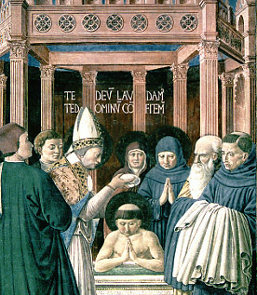 Read
Read 
Discussion